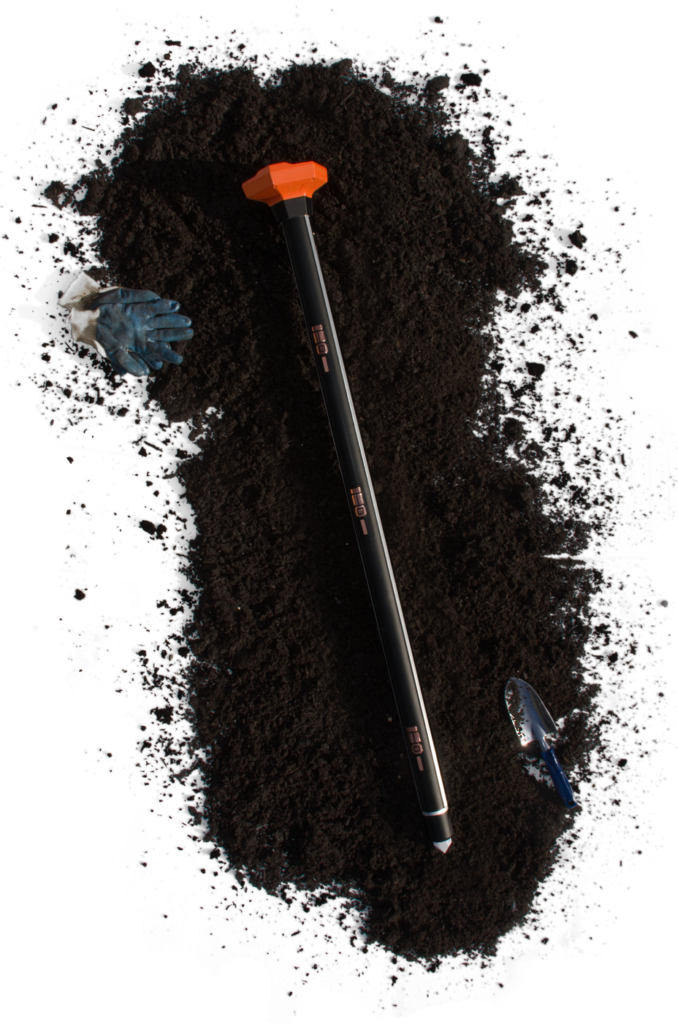full soil health visibility
No more guess work
Everything You Need to Maintain Soil Health
No more timely manual soil collection, long-awaited soil test results, or visual inspection–Teralytic’s sensors constantly checking and reporting on soil quality—24 hours a day and 365 days a year—farmers can now respond to changes in the fields faster, before they become problems.
soil moisture
The available water content (AWC) of the soil, or the amount of water available to the plant for uptake.
salinity
The total salt content in the soil, reported as electrical conductivity (EC).
nitrate
One of the inorganic forms of the macronutrient, nitrogen, a chemical element naturally occurring in soil that plants utilize for growth.
potassium
A chemical element naturally occurring in soil and providing plants with better root growth and drought tolerance.
phosphorus
A chemical element naturally occurring in soil and required for various plant functions.
Soil temperature
The warmth in the soil, measured by the heat exchanged between the soil and soil surface.
pH
The measure of the acidity or alkalinity of a soil, also known as the soil reaction.
respiration
The release of carbon dioxide due to soil organisms respiring.
aeration
The available oxygen content in the soil.
At Three Different Depths
6 INCHES
Sensors located six inches below ground, evaluating the soil for deep to shallow-rooting plants.
12 inches
Sensors located twelve inches below ground, evaluating the soil for moderate to deeper-rooting plants.
18 inches
Sensors located eighteen inches below ground, evaluating the soil for deep-rooting plants like trees and large shrubs.

Gas Sensors
Measures at 6” and 12” Aeration (O2) and Carbon (CO2)
Soil Sensors
Measures at all three sensors nitrate, potassium, phosporus, pH, soil moisture, salinity, and soil temperature.
Data Ingestion & ML Will Auto-Detect Data and Run Through Carbon Models
Teralytic provides strategy recommendations customized to each crop with real-time alerts sent to farmers’ phones or desktops. We work seamlessly into the farmers’ everyday routine, getting the data they need, when they need it, and freeing up time and energy to focus on what’s most important for their farm.
Agriculture
Crops and management practices will be detected automatically at scale, fine tuned manually.
Forrest
Species, age, and density will be automatically at scale, fine tuned manually.
Ranching
Auto-detection of ranch and pasture. Scenario planning for various grazing practices.
Decrease Your Carbon Footprint, Increase Your Agricultural Profit
In addition to real-time monitoring, our CO2 sensor helps farmers estimate changes over time and identify areas of strategic opportunity.

Scenario Planning
Our software can be used for carbon offset planning through calculating the number of years into the future with the land management approach. The CO2 sensor helps to improve our understanding of GHG emissions from soil and changes in soil carbon stocks. Our method identifies management practices that increase SOC across a variety of soil types, cropping systems, and climate conditions. This technology provides a cost-effective way to quantify the amount/ changes of SOC in the soil in lieu of traditional soil methods.
Real-Time Soil Data
Measuring SOC and participating in carbon trading markets also presents its own challenges, often putting the burden of collecting soil samples and sending to labs on farmers. This is costly and time-consuming resulting in low farmer adoption of sustainable practices and participation in carbon trading markets.
Carbon Baseline
The CO2 sensor grants the ability to predict your field’s carbon baseline using historical land management, weather, bulk density, soil organic carbon (SOC) percentage and soil organic matter (SOM) percentage. The readings from the CO2 sensor can be used for measuring and monitoring soil organic carbon (SOC) in agricultural settings. Peer reviewed literature has shown that measuring subsoil CO2 gas concentration is a good proxy for calculating SOC because of the statistical correlation between subsoil CO2 and SOC.


The next step in smart farming.
Take action on underperforming areas, optimize soil health, and reduce your carbon footprint at your fingertips.
